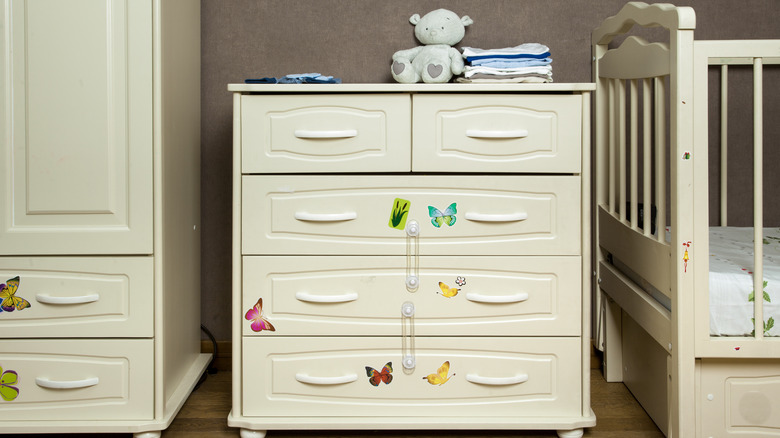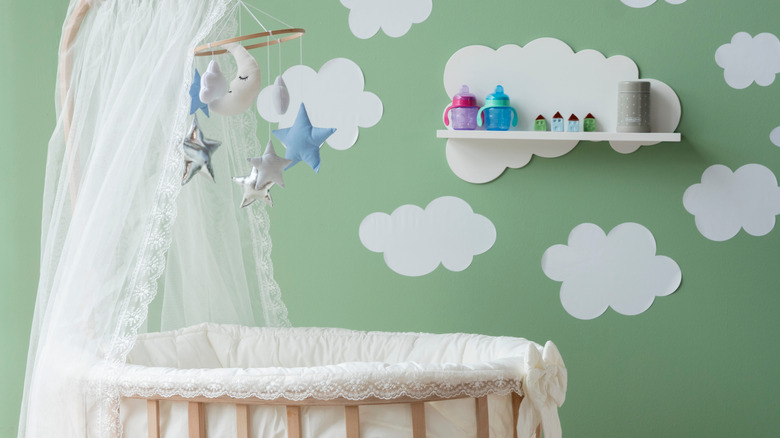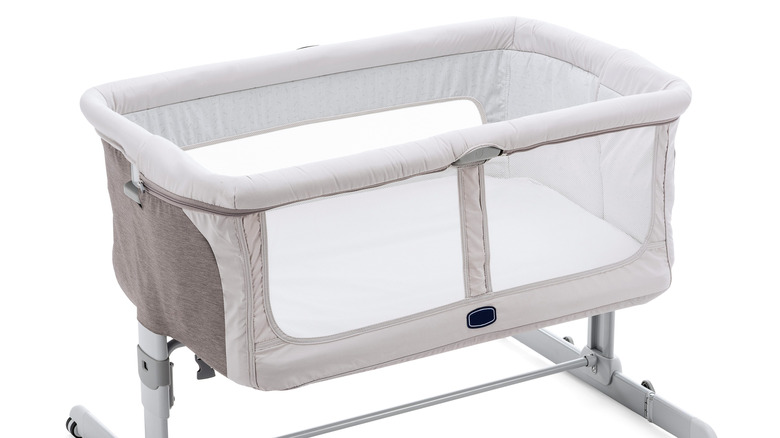How To Repurpose A Closet Into A DIY Nursery
Any apartment dweller or resident of a small house is all too aware of the drawbacks of limited space. There are no extra rooms or adequate storage areas, and everything must be in its designated place. Add a newborn to the mix, and you have a crisis on your hands — where will the new family member sleep if you lack the means or desire to move or expand? What if you don't have room to set aside as a nursery? As Apartment Therapy notes, wondering where to store your belongings and adequately apportioning sleeping areas is all part and parcel of sharing a small living space.
No doubt you have a closet, so that particular problem is surprisingly solved. A reach-in closet, or better yet, a walk-in one, are increasingly popular solutions for housing your baby within a tight living space. With a bit of creativity, planning, and organization, you can transform a strictly utilitarian closet into a cozy, baby-friendly, and practical closet nursery. And when your baby outgrows it, the cheerful nursery can revert to its previous duty as a drab storage space, according to The Spruce. Now, let's rock-a-bye baby in the closet!
Turning a closet into a baby coccoon
First, remove the contents from your closet of choice. You will need to store them elsewhere in bins, another closet, or an armoire. Next, create space by removing rods and unnecessary shelving. According to Domino, movable and adjustable shelves can be used instead to store supplies, toys, or a few knickknacks. The EveryMom emphasizes the need for space-saving vertical storage and suggests using a standing tower for linen. Hanging baskets to store things is another idea, and Bloom recommends keeping everything within reach and in a safe place.
Always keep in mind you are repurposing a very small space, and having an organized battle plan is essential. On the plus side, the baby and its accoutrements are small too. The space limitations may prod you into paring down unessential items or even giving them away as your child outgrows them.
Removing the closet door will create an open look for your nursery and provide light and ventilation. A curtain or drapes can be used in its place. A closet generally has a bare-bones, functional bulb; consider replacing it with attractive light and switch for ambiance. Painting your closet nursery a different color than its surroundings will also perk it up and set it apart. As with a conventional nursery, the closet can be decorated with decals, polka dots, animal images, or removable wallpaper.
Bedding and breathing
Infants up to six months can use a mini-crib to save space, and you also can place a miniature chair in the nursery. Mini-cribs are more than a foot shorter than standard ones, and they can be adjusted or collapsed and have wheels. Baby items can be stored underneath them to free up space elsewhere. Per Ecos Paints, you can also use a standard crib in a closet nursery, and they recommend placing it against the wall after removing the back rail. Additionally, a preschooler-style loft bed can be used in a modified closet for an older child.
Having adequate ventilation is a necessity in a cramped space lacking windows. Drop By My House advocates removing the closet door and setting up a vent and fan system to aerate the nursery for the baby's comfort and safety. This will also keep fresh everything that is stored inside. However, don't get any ideas about counting your closet nursery as an extra room if selling your house: It is still a closet, not officially a legitimate living space.


